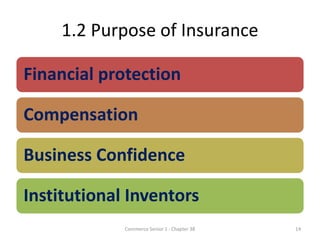The Greatest Guide To Pacific Prime
The Greatest Guide To Pacific Prime
Blog Article
Not known Factual Statements About Pacific Prime
Table of Contents6 Easy Facts About Pacific Prime ShownPacific Prime Fundamentals ExplainedGetting The Pacific Prime To WorkThe Best Strategy To Use For Pacific Prime8 Easy Facts About Pacific Prime Described

This is because the information were accumulated for a period of solid financial performance. Of the estimated 42 million individuals that were uninsured, almost about 420,000 (about 1 percent) were under 65 years of age, the age at which most Americans end up being eligible for Medicare; 32 million were adults in between ages 18 and 65, about 19 percent of all adults in this age; and 10 million were children under 18 years old, concerning 13.9 percent of all children (Mills, 2000).
These quotes of the variety of persons without insurance are created from the annual March Supplement to the Current Populace Study (CPS), performed by the Census Bureau. Unless otherwise noted, national quotes of individuals without wellness insurance policy and proportions of the population with different kinds of protection are based upon the CPS, one of the most widely utilized source of quotes of insurance coverage and uninsurance rates.
Some Known Facts About Pacific Prime.

Still, the CPS is especially valuable due to the fact that it produces annual quotes reasonably quickly, reporting the previous year's insurance protection estimates each September, and because it is the basis for a constant collection of price quotes for greater than twenty years, enabling analysis of trends in protection over time. For these reasons, along with the substantial use the CPS in other studies of insurance policy coverage that are presented in this record, we count on CPS quotes, with limitations kept in mind.

The quote of the variety of uninsured individuals broadens when a populace's insurance policy condition is tracked for numerous years. Over a three-year period starting early in 1993, 72 million individuals, 29 percent of the U.S. https://www.anyflip.com/homepage/fcter#About. populace, were without coverage for at the very least one month. Within a single year (1994 ), 53 million individuals experienced at the very least a month without insurance coverage (Bennefield, 1998a)
Six out of every ten without insurance grownups are themselves used. Working does improve the chance that one and one's family participants will have insurance coverage, it is not a guarantee. Also members of family members with two full-time wage income earners have practically a one-in-ten opportunity of being uninsured (9.1 percent without insurance price) (Hoffman and Pohl, 2000).
The smart Trick of Pacific Prime That Nobody is Talking About
New immigrants represent a substantial percentage of people without wellness insurance coverage. One evaluation has actually attributed a substantial section of the recent growth in the size of the U.S. uninsured populace to immigrants who showed up in the nation in between 1994 and 1998 (Camarota and Edwards, 2000). Current immigrants (those who concerned the USA within the previous four years) do have a high rate of being without insurance (46 percent), yet they and their children account for simply 6 percent of those without insurance policy across the country (Holahan et al., 2001).
The partnership between health and wellness insurance policy and accessibility to care is well established, as documented later on in this phase. The relationship between wellness insurance policy and wellness results is neither direct neither straightforward, a comprehensive medical and wellness solutions research study literature links wellness insurance protection to improved access to care, far better high quality, and enhanced personal and populace health and wellness standing.
Levels of evaluation for taking a look at the effects of uninsurance. It focuses especially on those without any type of wellness insurance coverage for any kind of length of time.
Not known Factual Statements About Pacific Prime
The issues faced by the underinsured are in some aspects comparable to those faced by the uninsured, although they are usually much less serious. Health and wellness insurance policy, nonetheless, is neither needed nor enough to obtain accessibility to medical solutions. The independent and direct effect of wellness insurance coverage on accessibility to health solutions is well developed.
Others will certainly obtain the wellness care they require even without medical insurance, by paying for it expense or seeking it from carriers who provide care cost-free or at highly subsidized prices. For still others, medical insurance alone does not make sure receipt of treatment because of various you can try these out other nonfinancial barriers, such as a lack of wellness care providers in their neighborhood, minimal access to transportation, illiteracy, or etymological and social differences.
Examine This Report on Pacific Prime
Formal research regarding uninsured populaces in the USA dates to the late 1920s and early 1930s when the Board on the Cost of Medical Care created a collection of records concerning financing doctor workplace visits and hospital stays. This issue became significant as the varieties of medically indigent climbed during the Great Depression.
Report this page